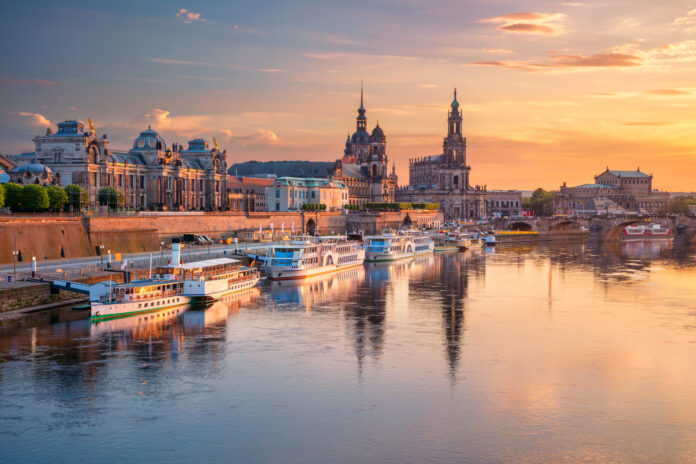The Free State of Saxony is always worth a visit thanks to its many attractions. The federal state in eastern Germany captivates visitors with the impressive mountain landscapes of the Ore Mountains, the idyllic nature of Saxon Switzerland and its numerous castles and palaces.
The most interesting places are usually close to each other and are ideal for a weekend trip or a short vacation in Saxony. But the sights in Saxony also have a lot to offer culture enthusiasts. Cities such as Dresden, Leipzig and Görlitz each have their own unique charm and a multitude of attractions.
Let our list of the most beautiful sights in Saxony inspire you for your next vacation!
Görlitz
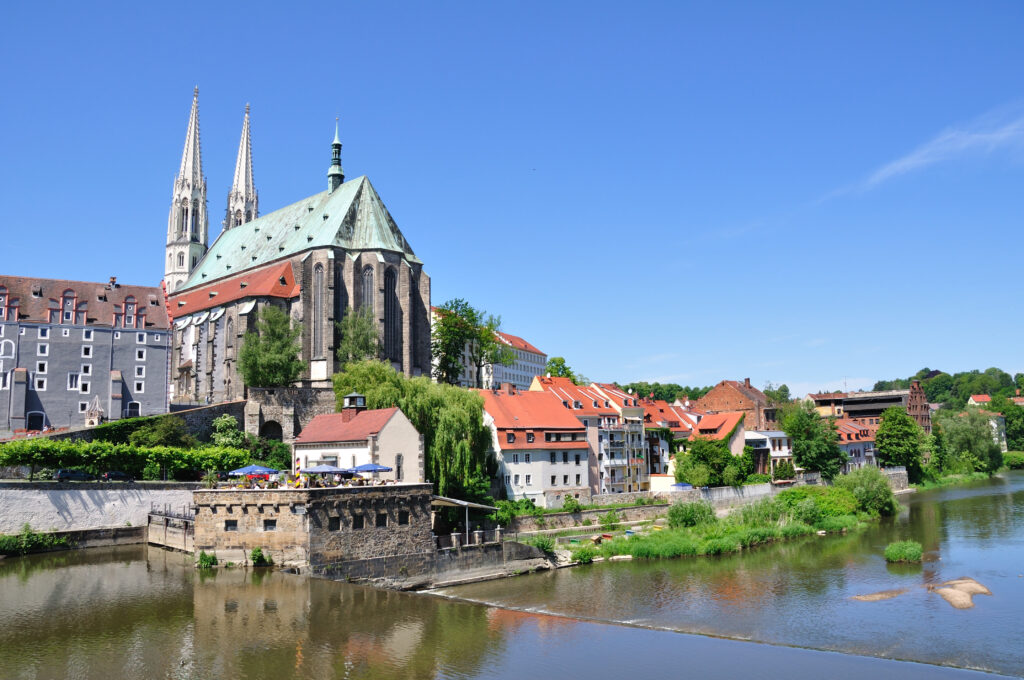
The city, which has around 60,000 inhabitants and lies on the border with Poland, has one of the best-preserved old towns in Germany. Görlitz shines with its extensive Renaissance and Baroque buildings. However, the cityscape is also characterized by unusually elegant quarters from the Wilhelminian era. Unique examples of Art Nouveau can also be admired.
A total of almost 4,000, often lovingly restored monuments bear witness to the city’s historic past. This is why historical films are regularly shot here.
Görlitz was first mentioned as a Sorbian village in 1071. The town developed into a regional center as early as the Middle Ages. Situated at the crossroads of two trade routes, the economy soon boomed. The cloth and woad trade as well as the first early capitalist manufactories led to the accumulation of extraordinary wealth, especially in the 16th century, which, despite all the past wars, is almost completely visible in the historic townscape.
The Untermarkt with its brilliant patrician houses and the Obermarkt surrounded by extensive baroque buildings are particularly noteworthy.
Zittau Mountains

It is said that the border triangle of Germany, Poland and the Czech Republic is at its most beautiful here. And this is exactly where the historic town of Zittau is located, in the middle of Upper Lusatia, at the foot of the Zittau Mountains.
In its alleyways, visitors wander through 750 years of town history and a time when the town became rich and powerful thanks to the cloth trade and damask weaving. Even Zittau’s greatest sights are textiles: two medieval Lenten cloths.
In addition to all the art treasures, a tour of the fully preserved historic town center is of course a must. The market square is dominated by the magnificent town hall in the style of an Italian palace with one of the most beautiful council chambers in Saxony and the church of St. Johannis with its 60-metre-high observation tower.
Just a stone’s throw away is the mighty Zittau Salt House, which has been standing for half a millennium, and the stroll continues past baroque fountains and the Butcher’s Bastion with its flower clock.
The Zittau Mountains Nature Park is a scenic gem in Saxony. In the midst of unspoiled nature, the 1000-year-old cultural landscape stretches out with a Bohemian touch and endearing flair.
The nature park is characterized by the harmony of the Zittau Mountains, Lake Olbersdorf, the historic town of Zittau and the idyllic villages. Allow yourself the time to discover a unique and tranquil cultural landscape in Germany’s smallest low mountain range.
The special charm of this small low mountain range is reflected in its varied sandstone mountains, volcanic peaks and picturesque valleys. Rock formations reminiscent of mythical creatures such as the “brooding hen” or the “hawk” stimulate the imagination.
Many botanical treasures such as marsh marigold, Turk’s cap lily and silver thistle can be found in damp meadows and mountain pastures.
In the silence of forests and meadows, in the early morning dew or at sunset, roe deer, badgers, eagle owls and peregrine falcons can be observed. Hundreds of kilometers of marked hiking, cycling, skiing and riding trails lead through the varied landscape to inspiring vantage points, where cozy mountain huts often await guests.
Muskau Park

Here, north of Görlitz, the Neisse flows through what is probably one of the most beautiful landscape parks in Europe. Its creator and namesake, Hermann Prince von Pückler-Muskau, created an unparalleled masterpiece of landscape architecture from 1815 onwards. Around 830 hectares of beautiful landscaped gardens surround the town of Bad Muskau.
The division into German and Polish sides, which can be reached via the double bridge built in 2003, gives the Garden Kingdom its unique character. The lines of sight that Prince Pückler had ingeniously created are particularly impressive. He created them with artfully planted trees, carefully placed buildings and by taking advantage of the charming location on the sloping terraces of the Neisse valley.
It is not without reason that you might assume you are walking in an English garden while strolling through the palace park, as Pückler gathered impressions and experiences on his travels through England. A new word had to be created for his passion – parkomania.
Meissen
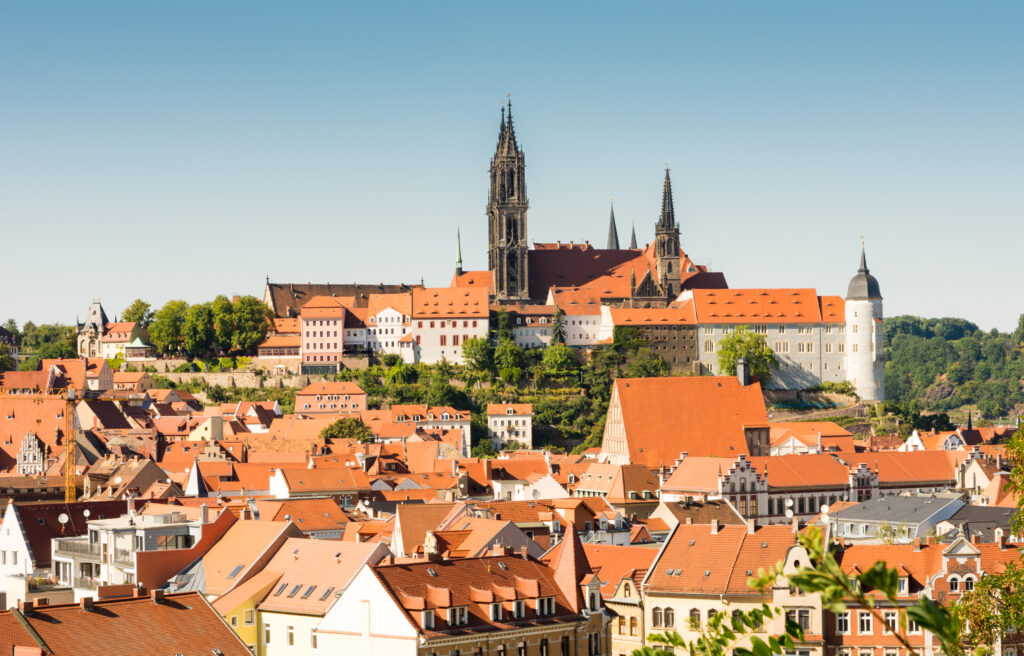
Meissen is one of the most beautiful towns in Saxony. With just over 28,000 inhabitants, it is a comparatively small and idyllic town surrounded by vineyards. Not far from the Elbe are Meissen’s most famous sights: Meissen Cathedral and Albrechtsburg Castle. It is considered to be the oldest castle in Germany. Both sights are surrounded by the beautiful old town of Meissen.
However, the Saxon town is also known for another highlight: Meissen porcelain. High-quality porcelain has been handcrafted here since 1710. You can take a closer look at the castle manufactory as part of a tour. The Frauenkirche church, the market square and the gatehouse are also popular excursion destinations that are ideal for taking photos.
Wine lovers will also get their money’s worth in the Saxon district town. Meissen is home to numerous winegrowers and wineries. The town’s most famous vinotheque is located in Proschwitz Castle above the town center. On the Boxberg, you can enjoy the fine wines amidst the vineyards with a beautiful view of Meissen. The 90-kilometre Saxon wine trail also runs through Meissen.
Saxon Switzerland
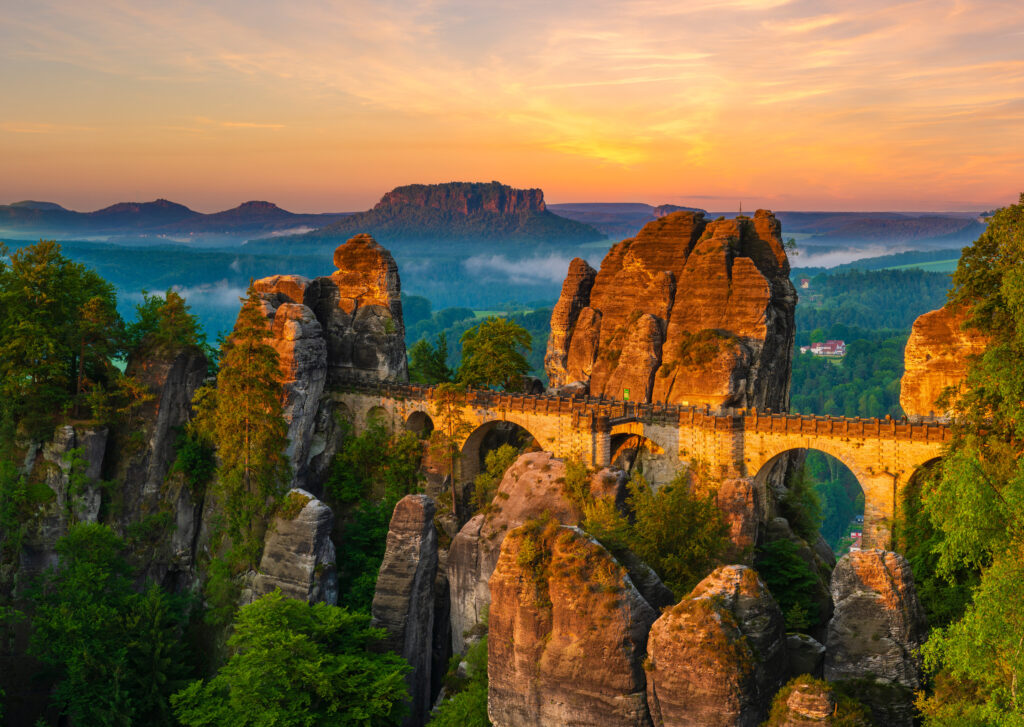
About 30 kilometers south of Dresden you will find the German part of the Elbe Sandstone Mountains. The region is known as Saxon Switzerland, a name given to it by two Swiss nationals in the 18th century because the mountains reminded them of their homeland.
Probably the most famous sight in Saxon Switzerland is the Saxon Bastion. It is a huge rock formation with a viewing platform overlooking the Elbe Valley and the Lusatian Mountains. The natural monument is located in the climatic health resort of Rathen, is 305 meters high and lies almost 200 meters above the Elbe.
Decades ago, this extraordinary rock formation inspired painters and poets such as Casper David Friedrich. Even today, people still hike here in droves to enjoy the view over the Elbe Sandstone Mountains. Most visitors choose the hike from Rathen up to the Bastei.
Incidentally, in addition to the viewing platform, there is also the 76-metre-long Bastei Bridge, which gives you a stunning view over the region. All in all, definitely worth a visit.
Leipzig
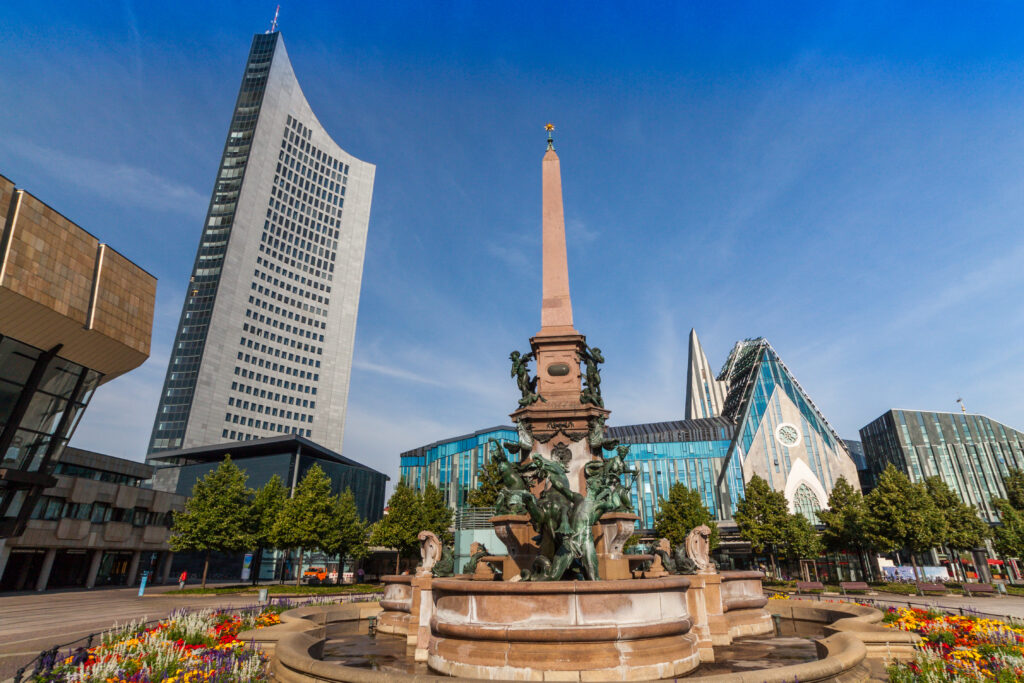
Hardly any other region has changed as much in recent decades as the Saxon metropolis of Leipzig. The city, which is one of the oldest trade fair venues in the world, is the boomtown of the new federal states par excellence. New buildings combine impressively with the old, lovingly restored building fabric.
Around the Old Town Hall, which was built between 1556 and 1557 in the Renaissance style and was sensationally large in its day, a cityscape shaped by the trade fair has developed over the centuries.
Several commercial courtyards and pedestrian arcades were built, which took on their current splendid appearance during the Gründerzeit. The most famous of these is the Mädlerpassage, which was built in the style of Milan’s Galleria Vittorio Emmanuele II. Also worth seeing are the Old Stock Exchange, the former Imperial Court of Justice building and Leipzig Central Station, the largest terminus station in Europe.
Leipzig is of course also famous for the Peaceful Revolution in the GDR that began here in 1989 and led to the reunification of Germany. Many things are therefore reminiscent of the Monday demonstrations that once took place after the prayers for peace in St. Nicholas Church.
But Leipzig’s cultural traditions, some of which are centuries old, also make it a worthwhile tourist destination. These include the Leipzig Opera, the Gewandhaus Orchestra in the New Gewandhaus and, in particular, the St. Thomas Boys Choir in St. Thomas Church.
Moritzburg Castle
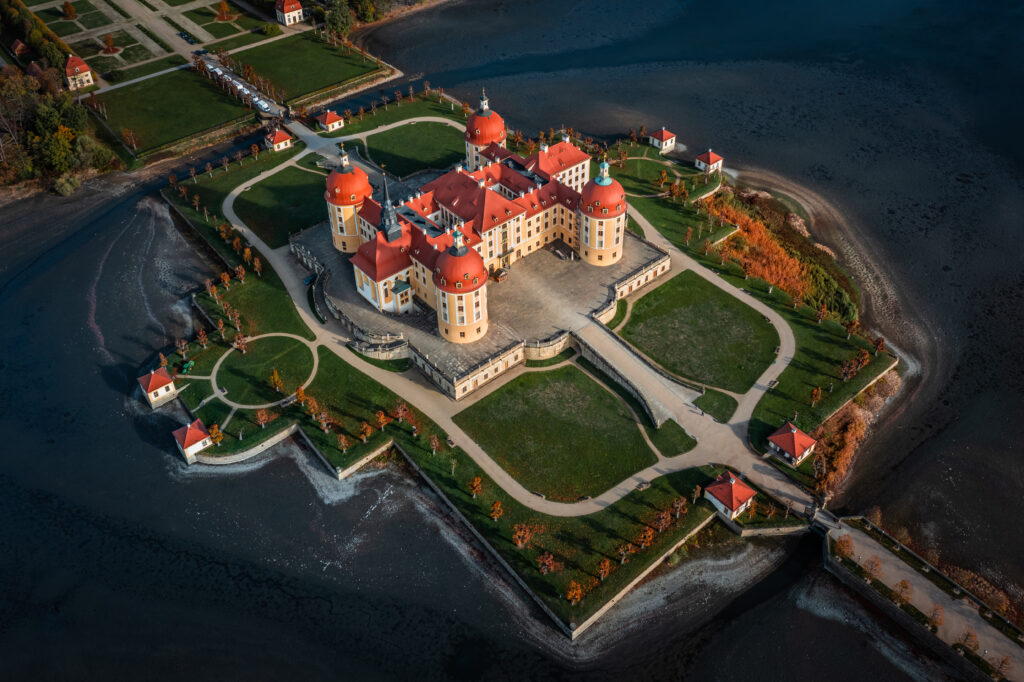
Situated on an artificial island, the baroque complex is considered the most beautiful moated castle in Saxony. The former hunting residence of the Saxon Elector and Polish King, Augustus the Strong, has an impressive appearance even from the outside with its four mighty round towers and the surrounding balustrade decorated with over 100 cherubs. The interior is even more magnificent.
The rooms, furnished with lacquered and magnificent furniture, valuable porcelain and hunting weapons, were decorated by the best artists of their time. The gilded leather wallpaper in the salons, the stucco work in the castle church and the collection of carriages are among the special treasures
The palace was built between 1723 and 1733 by converting a Renaissance palace that had already been used by Augustus the Strong’s ancestors. It served the Saxon ruler as a magnificent backdrop for royal festivities, which included large hunting events in summer. There is also a huge park on the banks of the castle pond.
But there is also plenty to see around the castle and park. There is a forest and pond landscape with many hiking trails. The Fasanenschlösschen (pheasant castle), for example, can be reached on foot, by carriage or by car. This can also be visited on a guided tour. There is also a harbor complex with a lighthouse, which was built for the sole purpose of re-enacting naval battles.
The Ore Mountains
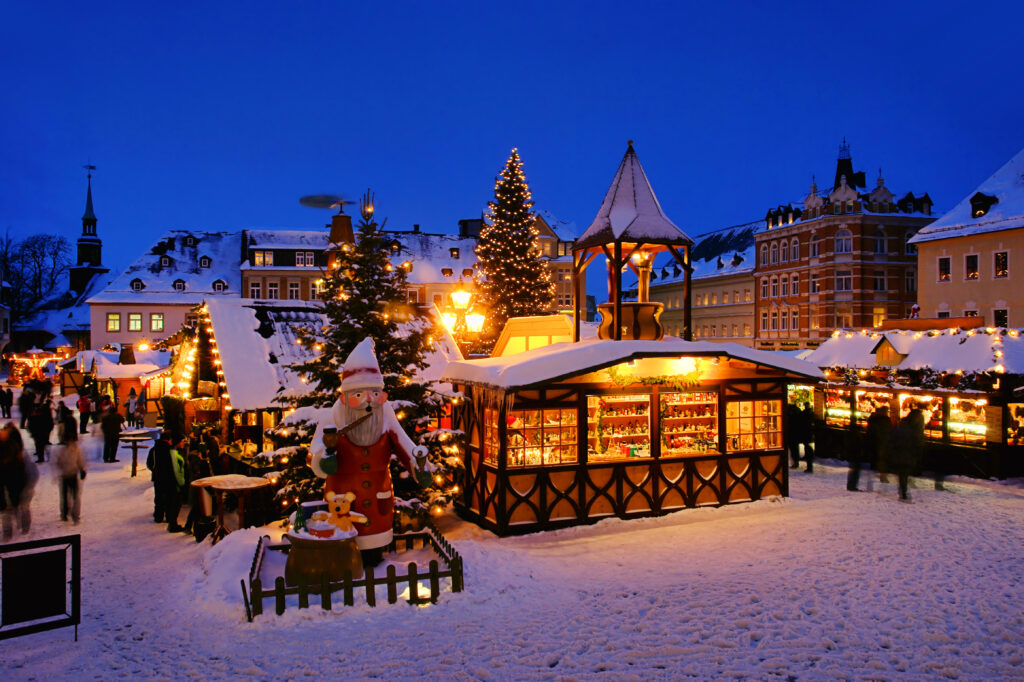
The Ore Mountains have a number of special features that make them very different from other low mountain ranges in Germany. For one thing, the geology is unusual, as the Ore Mountains are a long, continuous massif that slopes only gradually to the north. As a result, you will usually look in vain for a striking mountain and valley landscape on the German side.
At the same time, the Ore Mountains are one of the oldest mining regions in Central Europe and also the most intensively mined in the late Middle Ages, which is why the current name for the mountain range gradually became established from 1589 onwards. Traces and remnants of the now mostly abandoned mines can be found everywhere, which is why they have often been opened up to visitors and tourists as show mines and museums.
However, mining was not always able to feed the inhabitants. The people were forced to switch to other forms of employment. This gave rise to the tradition of woodcarving, which is typical of the region and which is now indispensable.
Wooden toys from the Ore Mountains, but especially the candle arches, smokers, Christmas pyramids, angels and miners that are put up at Christmas time, can be seen all over Germany – but most often here, because a candle arch is a must in every window between Klingenthal and Altenberg during the Advent season.
Freiberg
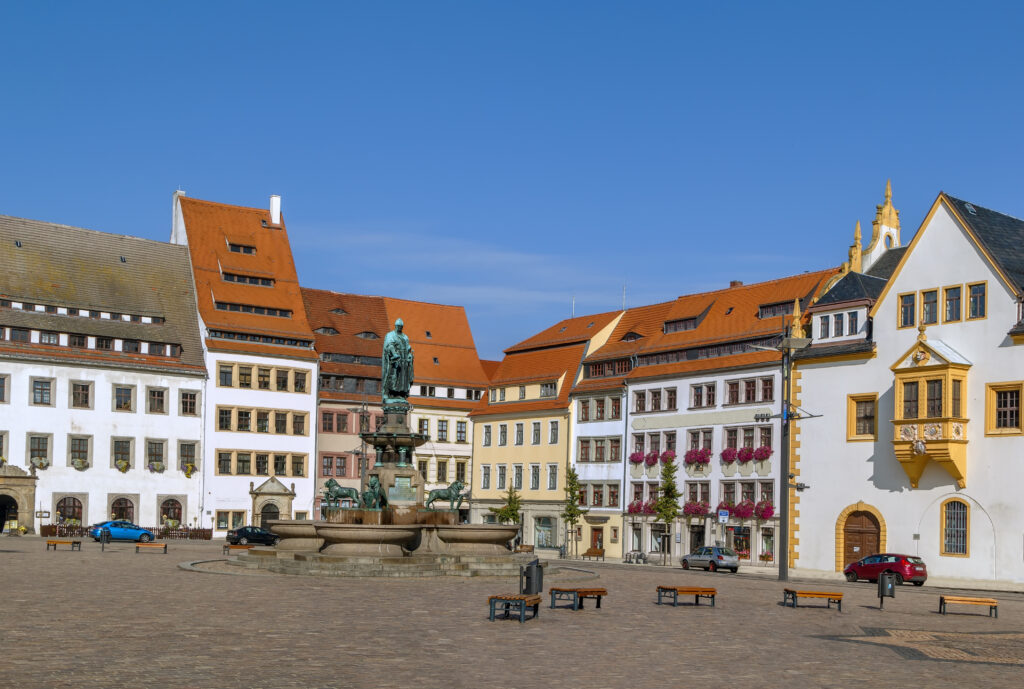
Freiberg, a mining town in the Ore Mountains, is often referred to as a silver town, but sometimes also as a silver mining town or Silbermannstadt. This is due to the once very large silver deposits in the region, to which the town owes its origins around 1162/70, but not only that. Not only was silver mined in the Freiberg mines for centuries, but the name Gottfried Silbermann is also closely associated with the town.
This organ builder, who grew up in neighboring Frauenstein, opened his workshop in Freiberg in 1711, which he ran until his death. As a result, five of the famous Silbermann organs were built in Freiberg’s churches, four of which have survived to this day; and Freiberg became the center of Saxon-Thuringian Silbermann organs.
However, the history of the town is primarily linked to mining. Its wealth of silver and the Freiberg mint made the rulers of the city, the Saxon dukes, wealthy princes and Freiberg was even the largest city in the duchy at one time.
However, although not only silver was mined, but also zinc and lead, there were always ups and downs. And at the beginning of the 20th century, mining even ceased completely following the collapse of world market prices.
Bautzen
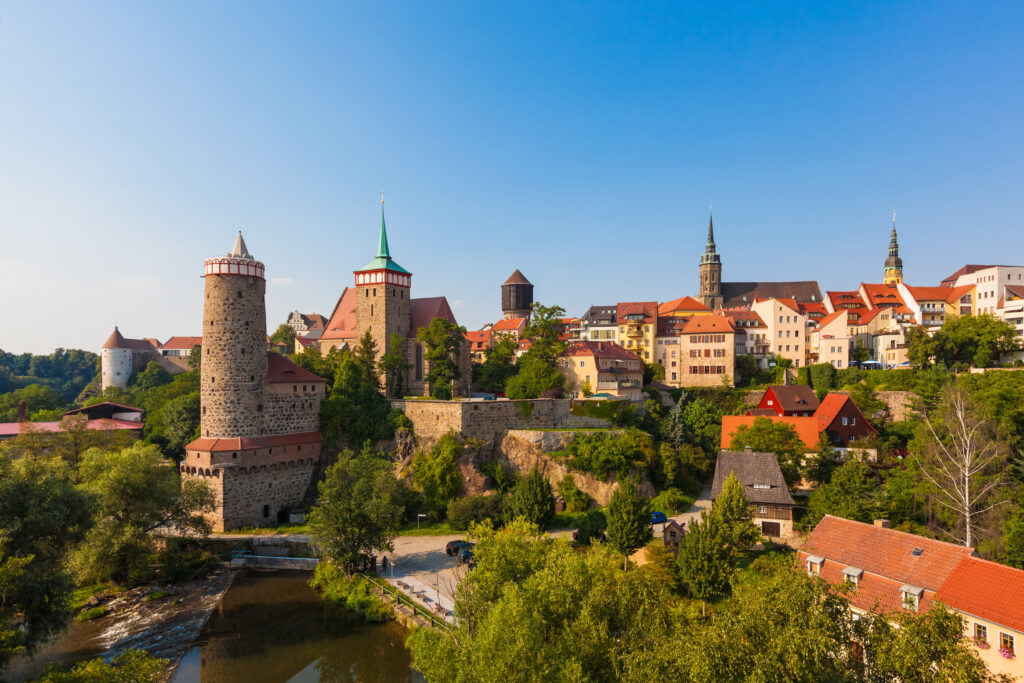
Bautzen is one of the few cities in Germany whose long-established population speaks two fundamentally different languages, as up to 10 percent of Bautzen’s inhabitants are Sorbs.
The Sorbian character of Bautzen can be seen everywhere on the bilingual street signs. Even in the municipal theater (Deutsch Sorbisches Volkstheater), performances are held in two languages.
The beautiful town, which is more than 1000 years old and stands out from afar with its many towers, was built on a granite rock above the River Spree. The most famous “sight” is the Royal Penitentiary, which opened in 1904. There is also the former Stasi prison, which is now a memorial site, which is why Bautzen has a particularly bad reputation among former GDR citizens.
However, the city shines above all with its huge selection of really worth seeing monuments from many eras and – hardly anyone knows it – one of the most beautiful baroque city centers in Germany. Particularly famous and the city’s landmark is the Tower Wasserkunst, built in 1558. Another main attraction is the leaning tower of Bautzen, the Reichenturm.
Although it is not as leaning as its famous namesake in Pisa, it still impresses with its medieval base and contrasting baroque top. Today, it is the most popular viewing tower in the city.
Königstein Fortress
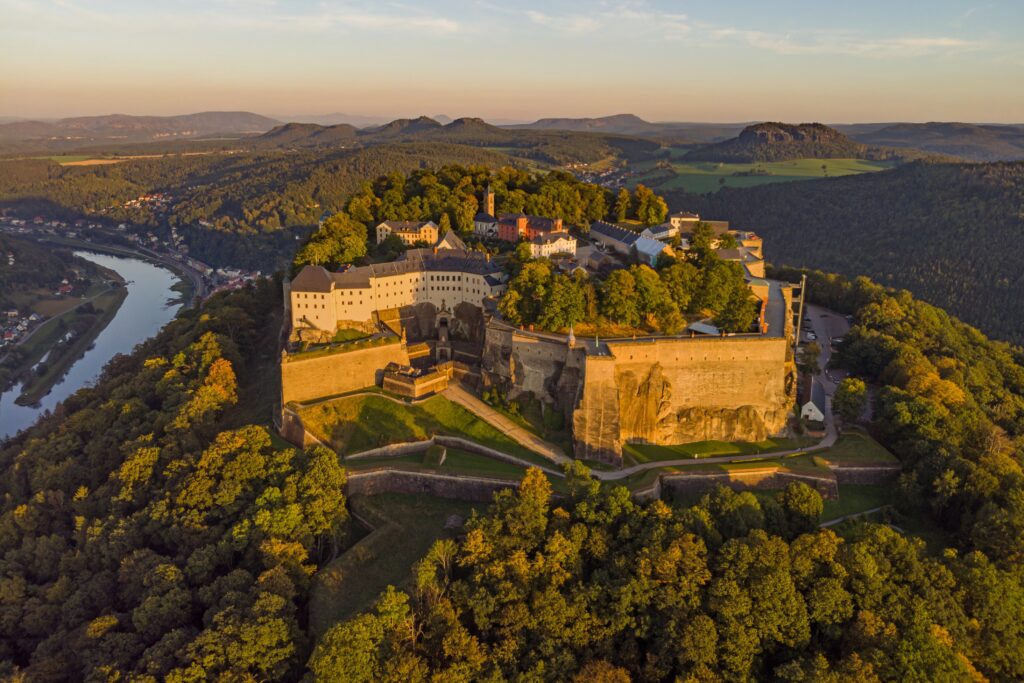
Königstein Fortress in Saxon Switzerland is one of the largest mountain fortresses in Europe. The huge defensive complex is located on a rocky plateau with up to 40 m high, vertically sloping cliffs, a table mountain standing directly on the Elbe.
A 2.2 km long fortification, partly equipped with cannons, surrounds the 9.5 ha fortress area. The effect on potential conquerors was as enormous as the size of the complex. The moral effect of the high rocks and walls alone was so great that no one ever attempted to take the fortification.
Today, Königstein Fortress is one of the most popular sights in Saxony. As in the old days, the fortress can still be reached via a steep ramp, where carts were once pulled up with the help of winches.
Pillnitz Palace
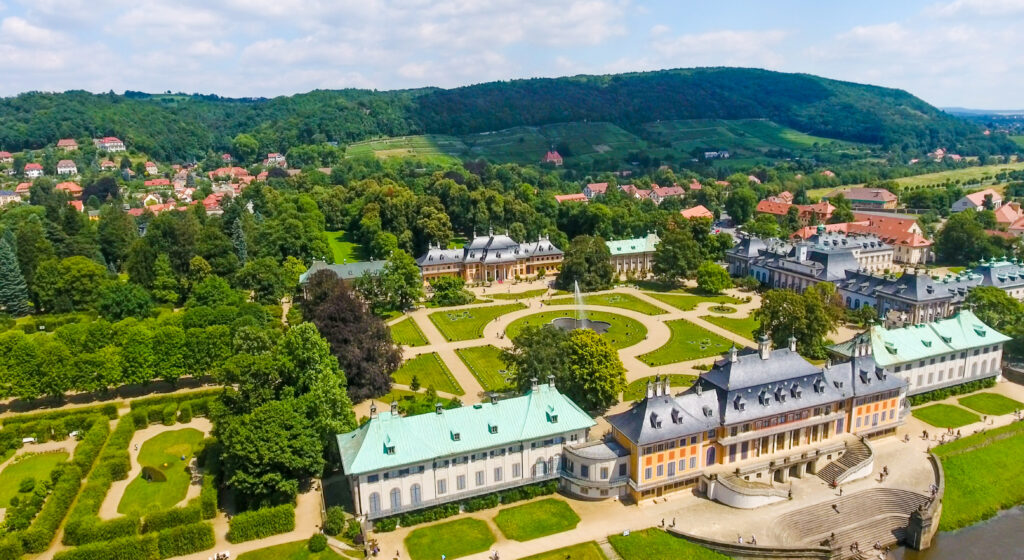
Pillnitz Palace is not just a palace, but an ensemble of palaces and pavilions that can be admired in a large park directly on the Elbe. Once built by Augustus the Strong and later extended by his successors, the baroque complex is almost completely preserved in its original state and is therefore one of the most important sights in Dresden.
The palace park of the extensive complex is best known for its tropical plants, which overwinter in the orangery and are displayed in the palace park in summer. The most famous plant is a 230-year-old Japanese camellia, which is protected by a mobile glass house in winter and blooms from February to April.
Important buildings in the palace complex are the Water Palace, the Mountain Palace and the Chinese Pavilion. Because the Water Palace is located directly on the Elbe, it is one of the most popular photo motifs in Saxony. Some of the original rooms of these buildings can be visited as museums.
The area surrounding the palace is also very attractive. With its wine-growing areas, it exudes a southern flair and contributes greatly to the popularity of the excursion destination. This also includes the former royal vineyard with the vineyard church and an artificial ruin.
Kromlau Park

The azalea and rhododendron park in Kromlau is much more than just a rhododendron park. Rather, it is a huge, 200-hectare park with Kromlau Castle and numerous other attractions. In addition to the azaleas and rhododendrons, the park has a unique appearance thanks to its basalt stone garden artworks.
The most famous work of art is the Rakotz Bridge. It is also known as the Devil’s Bridge and took 10 years to build. The basalt for the bridge and the other stone works of art was laboriously transported from Saxon Switzerland and what is now Poland.
Although the park is at its most beautiful in May and June, when the rhododendrons are in bloom, it is worth a visit all year round. With its enchanting wealth of trees, including tulip and trumpet trees as well as blood birches and weeping hazelnuts, the park is always a feast for the eyes.
The park was laid out from 1844 by Friedrich Herrmann Rötschke. The park design was also significantly influenced by the star of horticulture at the time, Prince Pückler, who created his famous park landscape in neighboring Bad Muskau. From 1889, the horticultural inspector Eichler began planting rhododendrons and outdoor azaleas. He thus created the present appearance of the park.
Zwickau
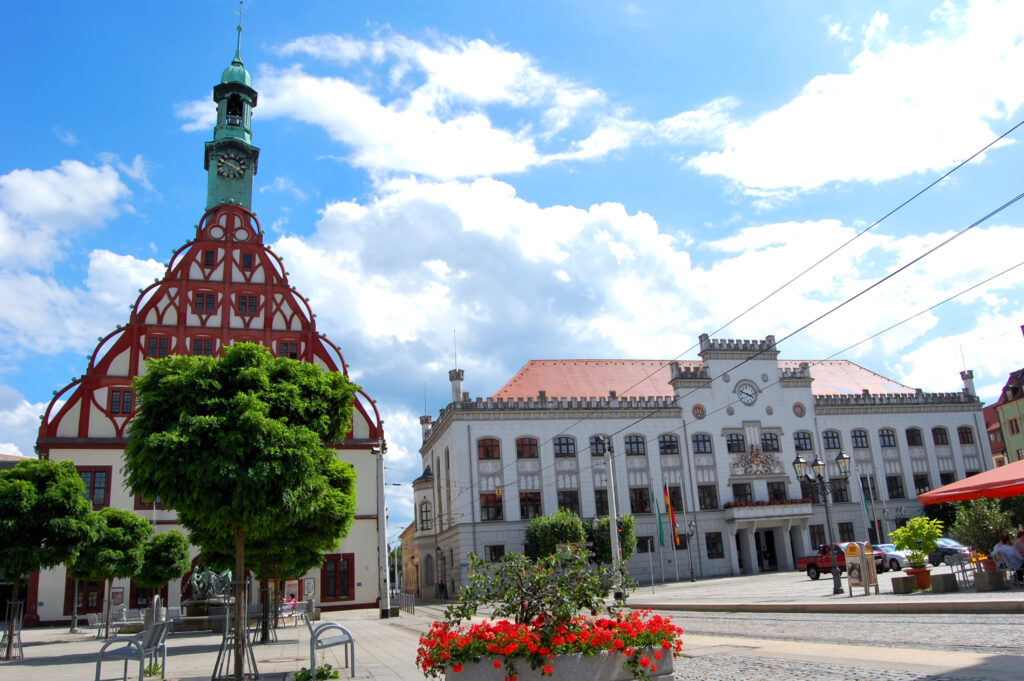
There is a lot to see in Zwickau and the city also has a special charisma. This is due to the fact that the former pearl of Electoral Saxony, as Elector Frederick the Wise once called the city, benefited several times in the past from long-lasting boom phases.
As early as the Middle Ages, silver and copper mining brought prosperity. Zwickau’s cloth was also a sought-after export. And even before the whole of Germany was turned upside down by industrialization in the 19th century, coal mining had already been intensified here thanks to technical innovations.
However, the town became famous above all after August Horch relocated the production of his cars here in 1904. With the Horch and Audi brands, Zwickau became the cradle of the Saxon automotive industry.
The boom of the 19th and early 20th centuries can be seen in the many well-preserved buildings from the Biedermeier period and the huge Wilhelminian style districts. However, even back then, the medieval town center had already been greatly altered by the intensive building activity.
A comparable dynamic began again in the 1990s – despite deindustrialization with its negative effects. Since then, not only have the old houses been renovated in an exemplary manner, but many new buildings have also been constructed.
Torgau
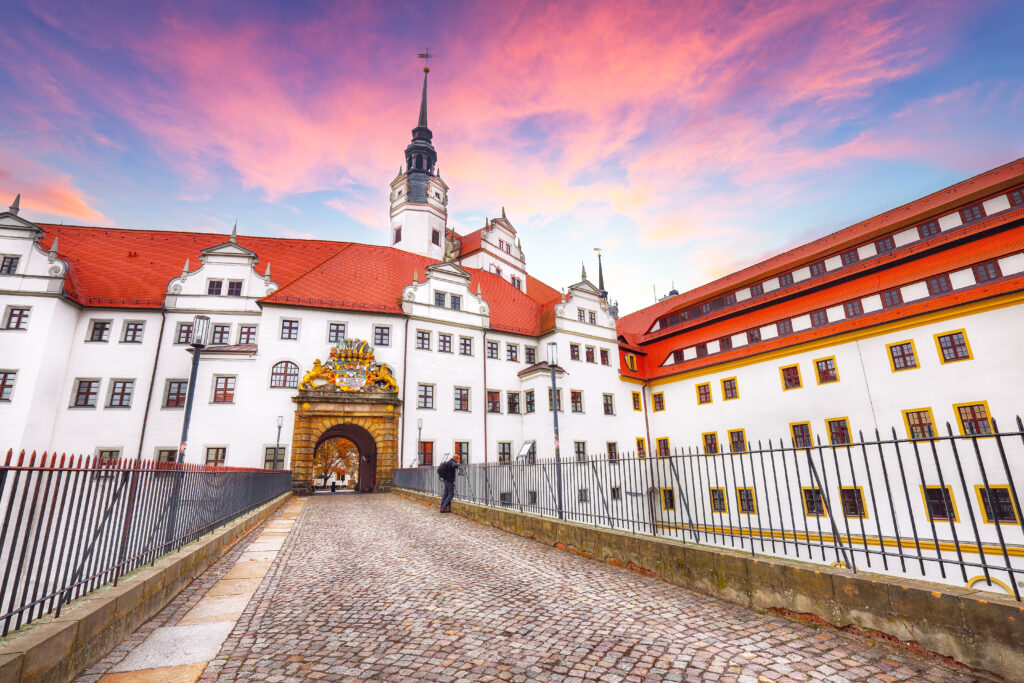
Even though Torgau is not exactly one of the main tourist destinations in Germany, the small town on the Elbe can still boast many valuable monuments that are reminiscent of an interesting history. These include Hartenfels Castle in particular, which is the most important and best-preserved early Renaissance castle in Germany.
None other than the Saxon electors, who were among the most powerful rulers in the empire at the time, had the castle built as their main residence from 1485. However, as Dresden became the capital of Saxony in 1547, the palace led a shadowy existence in the centuries that followed. However, this in turn ensured that the entire complex was preserved in its original state.
Torgau is often referred to as the town of the Renaissance, as in addition to the castle, the magnificent town hall, several elaborately built town houses and a large number of Renaissance portals on otherwise plain-looking houses bear witness to this period. The buildings were constructed in the 16th century, during a period of economic boom, even though Torgau was no longer a royal seat.
As the appearance of the town centre has changed very little since then, Torgau is a typical example of urban development from this period. n the lavishly restored Bürgermeister-Ringenhain-Haus, a fully preserved Renaissance-style interior can also be viewed.
Pirna
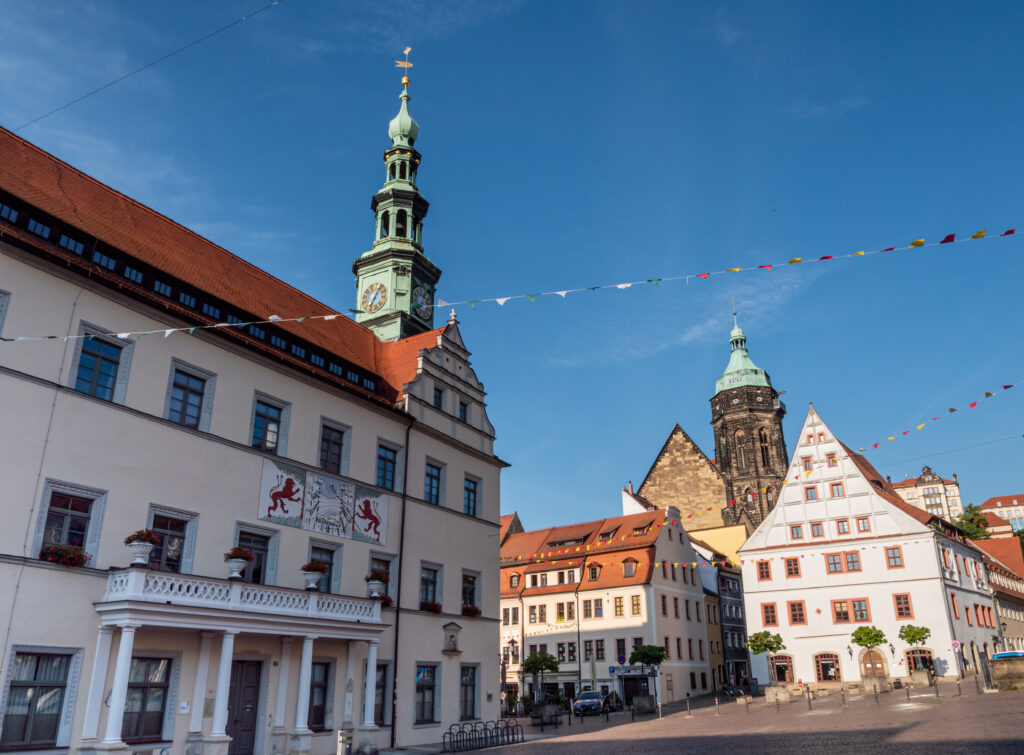
The Italian court painter to the Saxon Elector Friedrich August III, Bernardo Michiel Bellotto, found Pirna so interesting that he created eleven large views of the town between 1753 and 1755. If you compare some of his pictures with today’s streets and squares, there are still an incredible number of similarities.
Situated on the Elbe, between the city of Dresden and the Saxon Switzerland National Park, many parts of the city seem not to have changed at all since then. To this day, the old town houses and churches around the Renaissance-style town hall and Sonnenstein Castle above the old town dominate the townscape. That is why there is so much to discover in Pirna.
Whether it’s St. Mary’s Church with its painted Gothic net vaults, the town museum in the former monastery of St. Henry’s Church, the 16th-century Blechschmidthaus, Rochow’s House with its Baroque splendor or the angel oriel supported by a figure of an angel, there are lovingly preserved masterpieces of the past everywhere.
You can easily spend a whole day here, especially as many stores and restaurants invite you to go on a leisurely shopping spree.
Dresden
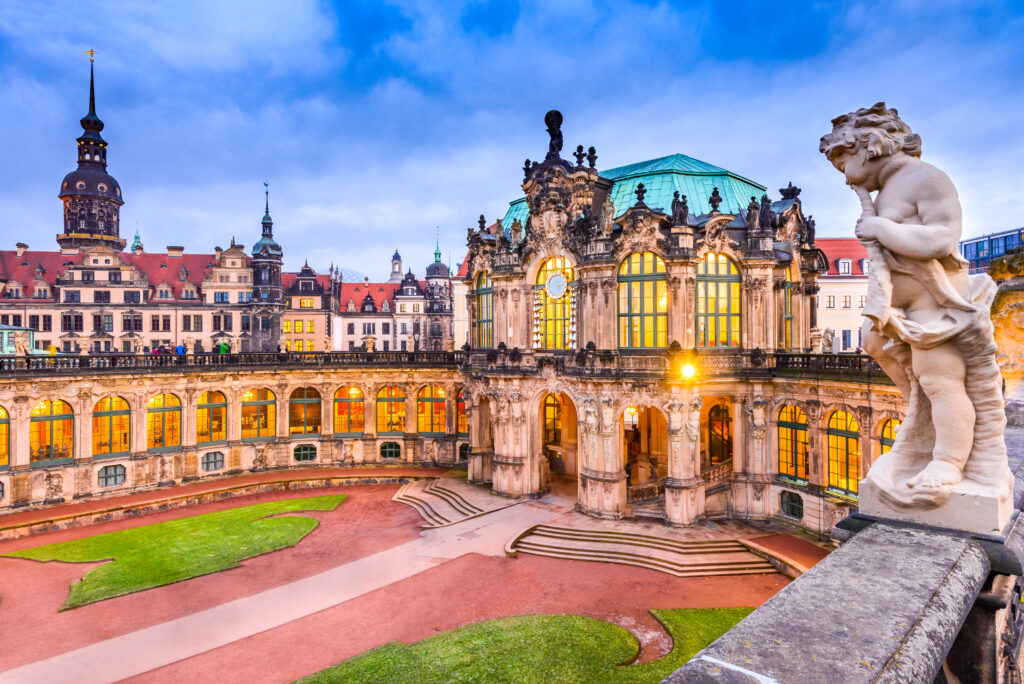
Dresden is a real treasure for history and art lovers, but also for anyone who wants to enjoy modern city life and breathtaking scenery.
With a rich heritage of important buildings, museums and events, Dresden offers an incomparable variety of sights. From the majestic Semper Opera House to the magnificent Zwinger Palace and the imposing Frauenkirche, there is a wealth of cultural treasures to discover in this city.
But Dresden is more than just its famous landmarks. The city enchants with its romantic alleyways and squares in the Old Town, offers a vibrant scene in the trendy Neustadt district and impresses with its location along the picturesque Elbe. The bridges over the river offer spectacular views of the city and invite you to take a relaxing stroll.
Whether you want to experience art and culture, are interested in the city’s history or simply want to enjoy Dresden’s unique atmosphere, this city will enchant you with its diversity and charm. With its rich history and important role in the world of opera, the Semperoper is an indispensable part of Dresden’s cultural heritage. A performance in this renowned opera house is an unforgettable experience and an absolute must for music lovers and culture enthusiasts.

